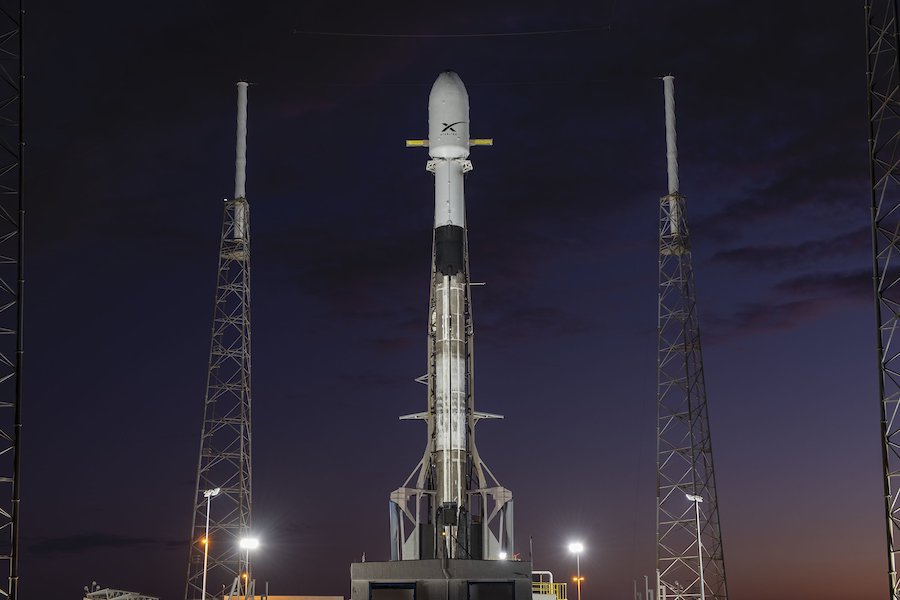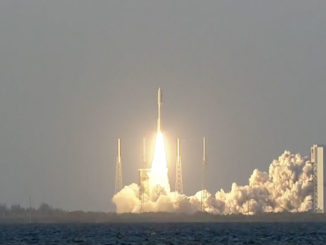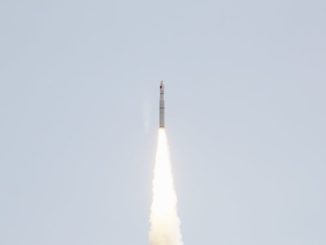
SpaceX teams across the United States are readying for what the company’s chief operating officer predicts will be a record number of launches in 2020.
Before the end of January, SpaceX aims to perform four Falcon 9 launches from Florida’s Space Coast — three for the company’s Starlink broadband network, and a crucial in-flight abort test for the Crew Dragon spacecraft no earlier than Jan. 11.
SpaceX has performed its final launch of 2019, finishing the year with 13 missions — 11 using the “single-stick” Falcon 9 and two employing the Falcon Heavy with three booster core connected together. All 13 of the missions were successful.
The company accomplished 21 launches in 2018, and 18 in 2017.
That adds up to 52 successful missions in a row — one of the longest-running success streaks in the global launch industry — since a Falcon 9 rocket exploded on the launch pad at Cape Canaveral during final preparations for a pre-flight test-firing in September 2016, damaging the launch complex and destroying an Israeli communications satellite.
Gwynne Shotwell, SpaceX’s president and chief operating officer, said the company is poised to launch a lot more rockets next year.
“I think in 2020 we’ll do more, and that’s because of Starlink,” she said in a roundtable discussion with reporters earlier this month. “I think we will have 14 or 15 non-Starlink launches, and then we’ll fly Starlink as often as we can.
“I need second stages to be built a little bit faster, but we would probably shoot for 35 to 38 missions next year,” Shotwell said.
Every Falcon 9 and Falcon Heavy launch needs a new second stage produced at SpaceX’s factory in Hawthorne, California. But many of SpaceX’s launches utilize reused first stage boosters. That eases pressure on production teams, SpaceX officials said.
The company says it plans to build around 10 new Falcon 9 first stages in Hawthorne next year. That’s down from around 16 to 18 new first stages that SpaceX manufactured a couple of years ago. The reduction in the booster build rate has allowed SpaceX to reassign engineers and technicians to other roles within the company, officials said.
The Crew Dragon’s abort test in January will utilize a Falcon 9 rocket launched from pad 39A at NASA’s Kennedy Space Center. Around a minute-and-a-half after launch, the Falcon 9’s Merlin first stage engines will shut down, and the Crew Dragon capsule will fire its SuperDraco abort thrusters to fire away from the top of the launch vehicle.
The high-altitude escape exercise will prove the capsule’s ability to safely carry its astronaut passengers away from an in-flight rocket failure before NASA clears the Crew Dragon to carry humans later in 2020. The Crew Dragon will parachute to a splashdown in the Atlantic Ocean off Florida’s east coast, where SpaceX teams will retrieve it and return it to port.
NASA is paying SpaceX more than $3 billion to develop, build and fly Crew Dragon spaceships to ferry crews to and from the International Space Station.
The in-flight abort test was previously scheduled for late December, then Jan. 4. The new target launch date of Jan. 11 is pending approval from the U.S. Air Force’s Eastern Range, according to NASA.
The Crew Dragon spacecraft SpaceX is preparing for the high-altitude abort test completed a series of engine hotfire tests on a stand at Cape Canaveral Air Force Station in November. The test-firings verified SpaceX’s fix for a valve issue that caused the explosion of a Crew Dragon capsule during a similar hotfire test in April.
Shotwell estimated the explosion of the Crew Dragon capsule in April alone caused three to four months of delay in SpaceX’s commercial crew program.
Up to 180 Starlink satellites will be launched on the next three Falcon 9 missions dedicated to building out a fleet orbiting relay stations for SpaceX’s planned global Internet service.
The next launch, scheduled for Jan. 3 at approximately 10:20 p.m. EST (0320 GMT on Jan. 4) from Cape Canaveral Air Force Station’s Complex 40 launch pad, will add around 60 satellites to the 120 spacecraft SpaceX has shot into orbit on two previous Falcon 9 missions in May and in November.
SpaceX plans to operate the initial block of 1,584 Starlink satellites in orbits 341 miles (550 kilometers) above Earth. The company, founded by billionaire Elon Musk, has regulatory approval from the Federal Communications Commission to eventually field a fleet of up to 12,000 small Starlink broadband stations.
SpaceX confirmed Thursday that it plans a Falcon 9/Starlink launch in late January from pad 40. The update followed similar announcements from SpaceX on the schedule for two preceding Starlink missions in late December and mid-January, both also from Complex 40.
The late December launch has been delayed to Jan. 3.
Shotwell had predicted SpaceX would perform more than 13 launches in 2019, but some of the missions were delayed.
“I think the only ones we delayed are a couple of Starlinks, and then crew,” Shotwell said. “For the first time, we’re waiting for our customers, which is a much happier place for us to be.”
Shotwell’s forecast of SpaceX’s 2020 launch manifest presumes the company can launch a Starlink mission as often as twice per month, each with up to 60 satellites.
“Production on Starlink is going really well,” she said earlier this month in a meeting with reporters at SpaceX’s headquarters in Hawthorne, California. “I think the next flight (set) was shipped to the Cape. We build roughly seven satellites … Starting into the new year, you should see a mission every two-to-three weeks from us. We will hold a Starlink mission for a customer launch. But that should be roughly the cadence.”
The flat-panel Starlink satellites, built at a SpaceX facility in Redmond, Washington, fill the volume of the Falcon 9’s payload fairing. Each satellite weighs around 573 pounds, or 260 kilograms, and the Starlink craft stacked together form the heaviest payload SpaceX has ever launched.
Highlights of SpaceX’s planned 2020 launch schedule include the Crew Dragon’s first mission with astronauts, scheduled as soon as the first quarter of the year. NASA astronauts Bob Behnken and Doug Hurley will fly aboard the Crew Dragon to the International Space Station after launching on a Falcon 9 rocket from pad 39A at the Kennedy Space Center in Florida.
In late 2020, SpaceX plans to launch its fourth Falcon Heavy rocket from pad 39A at the Kennedy Space Center with a U.S. Air Force payload. For that mission, designated AFSPC-44, the Falcon Heavy will target a high-altitude circular geosynchronous orbit more than 22,000 miles (nearly 36,000 kilometers) above Earth.
SpaceX also plans to launch two Dragon cargo missions from Cape Canaveral to the space station in 2020 — in March and August — and two Air Force GPS navigation satellites are slated to ride Falcon 9 rockets into orbit from Florida’s Space Coast in March and July.
An Argentinian radar observation satellite named SAOCOM 1B is scheduled for launch in March from Cape Canaveral on top of a Falcon 9 rocket. That mission, targeting a polar sun-synchronous orbit, was moved from Vandenberg Air Force Base and will be the first polar orbit launch from Florida since 1960.
SpaceX launches at Vandenberg will resume in November 2020, when a joint U.S.-European oceanography satellite named Sentinel 6A will lift off from the California launch base on a Falcon 9 rocket.
Email the author.
Follow Stephen Clark on Twitter: @StephenClark1.



